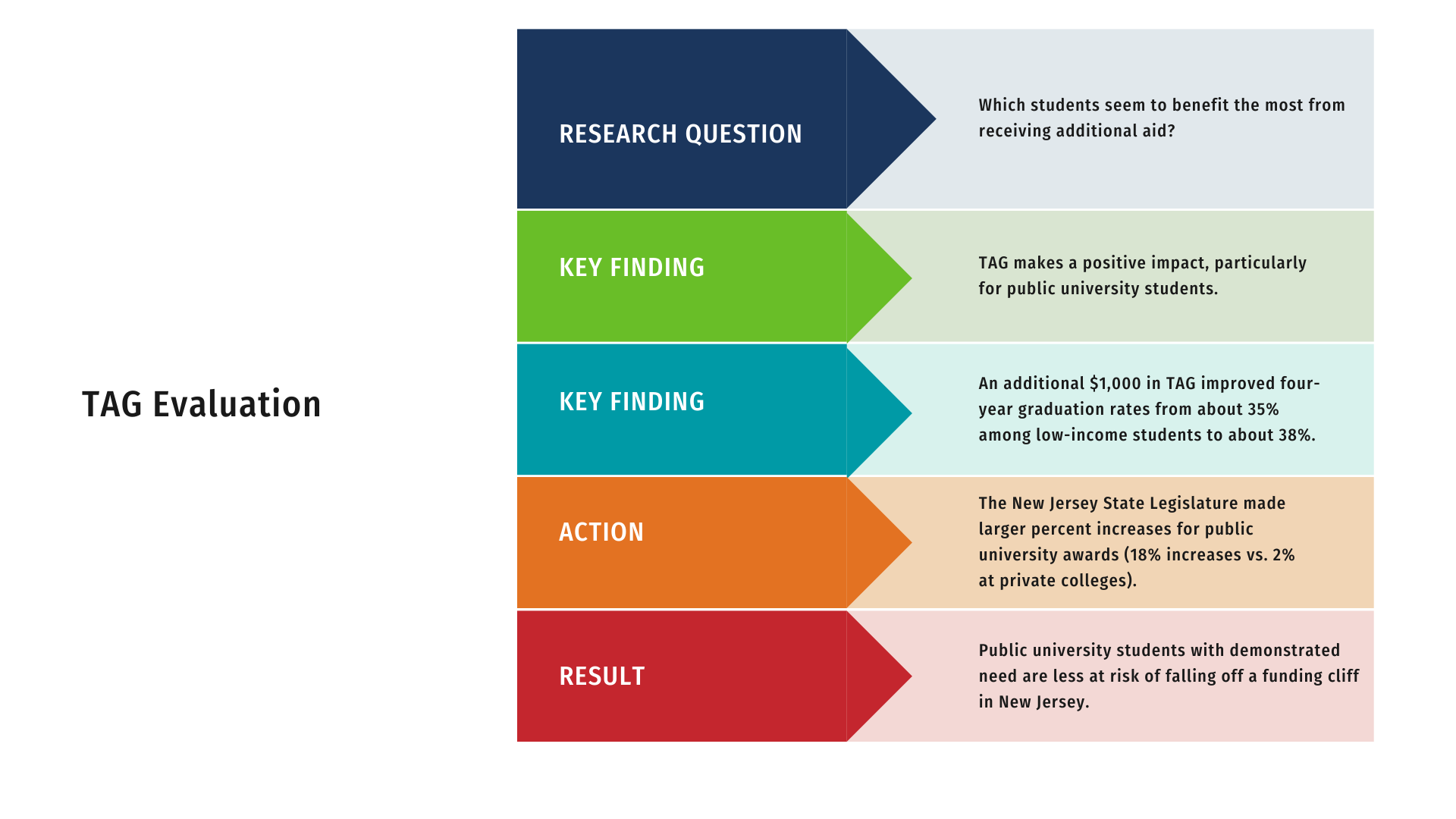The Case for Re-examining State Financial Aid Funding Formulas
December 06, 2021
By Saúl Valdez, Program Officer, College Success and Drew Anderson, Economist at the RAND Corporation
Because of outdated structures in the world of financial aid, students can fall off a funding cliff. One more dollar of income, one day late filing the FAFSA, or failing to complete that last question on the form can take away hundreds or thousands of dollars in aid. Targeted programs — as opposed to universal approaches like eliminating tuition — have to operate this way. They make students apply for funds, and they use the information on those applications to target aid.
There is no one approach to targeting. States all operate a little differently, but not necessarily because they tailor programs to be more responsive to local needs. More likely, each state program was designed decades ago under different political and budgetary conditions, and little has changed since then. The present moment offers opportunities for change, making the most of new funding sources, and finding ways to generate new knowledge about what works best for students.
Take New Jersey for example. The state’s Tuition Aid Grant (TAG) program is the nation’s most generous need-based financial aid program on a per-student basis. But like other programs that seek out students with financial need, TAG defines rigid boundaries. If students fall outside those boundaries, their funding can drop significantly. The lowest-income students qualify for $10,044 in TAG to go toward a year of public university tuition. That aid drops by $1,136 — more than 11 percent — for students with slightly more income and assets. Similar drops occur if a student transfers to a different university, enrolls for a tenth semester, or continues to climb up the income ladder.
Why outside funding is often needed to evaluate longstanding programs
Are these particular boundaries and grant amounts the best way to design the program for New Jersey? Until now, there was no evidence-based answer to this question. Even though TAG has been operating in this manner since 1978, there had been no rigorous, large-scale research to answer that question. Research can take place at state agencies, but in many states these administrative units may not have the capacity or funding in their budget to do in-depth analysis. Agencies can forge partnerships with external experts, which requires sharing data and confidential information while protecting students’ privacy. Investing the time to build trust and find the resources for analysis can pay off though, if the findings help make aid dollars more effective.
ECMC Foundation funds first evaluation of TAG
With funding from ECMC Foundation, researchers at the RAND Corporation were able to undertake the first evaluation of TAG. Researchers tracked students who, because of program eligibility cutoffs, received sharply different amounts of aid. TAG is awarded to undergraduate students of all ages and attending all types of colleges and universities in the state. Leaders in New Jersey asked researchers to find which students seemed to benefit the most from receiving additional aid. The lowest-income students? Or those facing the highest tuition?
The study, published in early 2021, demonstrated that TAG makes a positive impact, particularly for public university students. Researchers found that an additional $1,000 in TAG improved four-year graduation rates from about 35 percent among low-income students to about 38 percent. These results fed into the conversation about the future of TAG. In the past, periodic funding increases for TAG were typically allocated as percent increases across the board. This maintained the same program structure. When the legislature increased TAG funding by $35 million dollars in summer 2021, the state decided to take a different route than they had in the past. They made larger percent increases for public university awards (18% increases versus 2% at private colleges), where the strongest positive effects were estimated in the research findings. Now, public university students with demonstrated need are less at risk of falling off a funding cliff in New Jersey.


Other states are beginning to evaluate their financial aid programs
Other states could conduct similar analyses, partnering with researchers and nonprofits to design and execute studies of their financial aid programs. Helping states re-examine their funding formulas can occur several ways. For instance, ECMC Foundation has supported two cohorts of the Attainment Academy initiative led by the State Higher Education Executive Officers Association (SHEEO) and Education Strategy Group (ESG). These partners are bringing together state leaders over the next year to identify and adopt a discrete set of bold and actionable COVID-19 recovery strategies that address racial equity gaps in postsecondary credential attainment. In the first Attainment Academy cohort held from 2019 through 2021, North Carolina committed to simplify its need-based grant program by offering a singular “North Carolina Scholarship.” Michigan launched “Futures for Frontliners,” which was the nation’s first program offering tuition-free college for frontline workers during the stay-at-home orders made last spring and summer. SHEEO and ESG recently announced that Hawaii, Kentucky, Montana and Missouri will be part of the second cohort.
More decades-old policies offer opportunity for meaningful change
Making college more accessible and affordable for all students will take the efforts of government leaders, educators, advocates, funders, researchers and more. It will also require the linkage of not only college outcomes and financial aid eligibility, but student background information as well. To fully understand how grant programs may help to promote equity, research data sets and financial aid studies should include student race/ethnicity, first-generation status, neighborhood and high school attainment. Many decades-old policies offer the opportunity to conduct similar research and design creative solutions for the future. The Foundation is eager to see this approach continue to produce meaningful change during this time of crisis.
